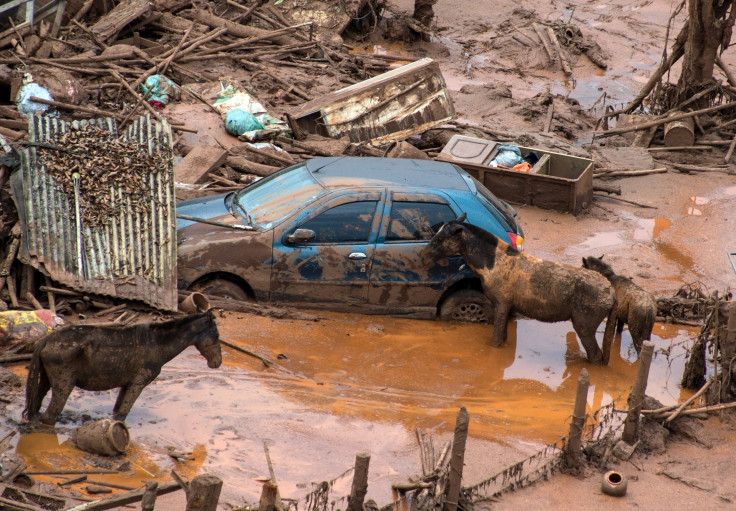BHP Billiton Says Mud Tailings From Brazil Dam Burst Chemically Stable

Australia’s BHP Billiton Ltd., co-owner of the mining company responsible for Brazil’s deadly dam burst earlier this month, said Thursday that tailings in the mud that polluted an important river were chemically stable. The company added that the chemical composition in the water will remain the same.
“The tailings that entered the Rio Doce [river] were comprised of clay and silt material from the washing and processing of earth containing iron ore, which is naturally abundant in the region. Based on available data, the tailings are chemically stable. They will not change chemical composition in water and will behave in the environment like normal soils in the catchment,” BHP said, in a statement.
BHP’s comments came after the United Nations Office of the High Commissioner for Human Rights said Wednesday that the mud tailings were toxic and urged the Brazilian government to take action to protect the environment and health of its people. The agency's special rapporteurs John Knox and Baskut Tuncak said the measures taken by the Brazilian government, BHP and the mining company’s co-owner Vale SA, were “clearly insufficient.”
According to the agency, the dam burst released 50 million tons of iron ore waste, which had high levels of toxic heavy metals and other toxic chemicals, into the river.
"The government and companies should be doing everything within their power to prevent further harm, including exposure to heavy metals and other toxic chemicals," the two rapporteurs said, in a joint statement.
“The scale of the environmental damage is the equivalent of 20,000 Olympic swimming pools of toxic mud waste contaminating the soil, rivers and water system of an area covering over 850 kilometers [528 miles],” Knox said. He also said that the river was considered by scientists as “dead.”
BHP said Brazil's National Water Agency and the Brazilian Geological Service were continuing to collect, examine and report water and sediment samples in the Rio Doce. Results from the most recent samples of the "concentrations of metals obtained at these sites do not significantly differ from the results produced by the Geological Survey in 2010," BHP said.
The dam burst on Nov. 5 at Samarco Mineracao SA, a mining site in the city of Mariana, sent thick red mud rolling down the hilly area. Lorries, cars and houses were trapped in the mining waste and the burst led to considerable environmental damage. The cause of the accident was not known.
Samarco, co-owned by Australia’s BHP and Brazil’s Vale, agreed on Nov. 16 to pay $262 million in compensation, public prosecutors said Monday. The incident, which occurred in the southern Minas Gerais state, killed over a dozen people and left several missing.
© Copyright IBTimes 2024. All rights reserved.




















